Frank E. Moss Courthouse will be stronger and greener after extreme renovation
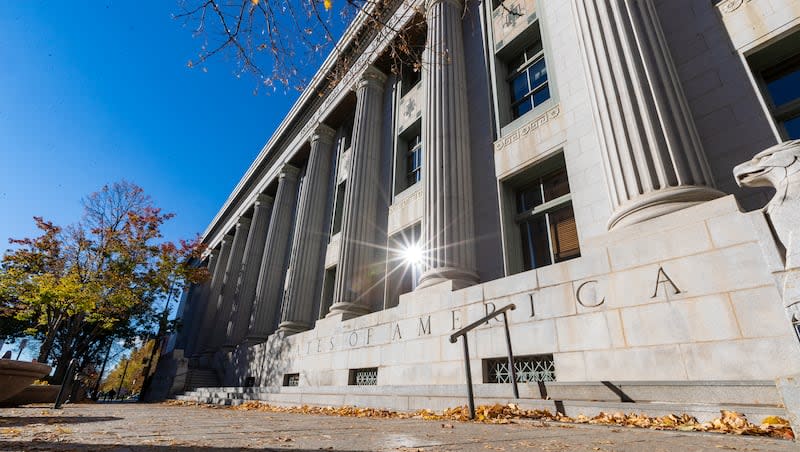
- Oops!Something went wrong.Please try again later.
- Oops!Something went wrong.Please try again later.
At the Frank E. Moss U.S. Courthouse in Salt Lake City, the windows, doors, paintings and moldings have been stripped down and sent to a storage facility, while the terracotta floor was covered for protection.
This neoclassical building is undergoing an expansive renovation since April 2022, and Tim Gaidis, the project’s designer, said it is “the most complicated building” he’s worked on during his 35-year-long career.
“I’ve called it the one-eyed teddy bear that you love,” Gaidis told reporters at the construction site Tuesday morning. “There is something new about it every time you turn the corner; a little piece of history, a little patchwork of a quilt.”
His reaction is warranted. Since it was erected 118 years ago, the building has been renovated 20 different times — creating a hodgepodge of systems.
The latest $100 million facelift was necessary to reinforce the masonry work, as the historic building lies on the Wasatch fault zone, making it prone to seismic risk.
On Tuesday, Robin Carnahan, administrator of the U.S. General Services Administration, toured the under-construction courthouse, and announced $50 million in additional funding, springing from the Biden administration’s Inflation Reduction Act, touted as the largest climate investment in history.
“We’re transforming federal facilities like the Moss Courthouse into models of clean energy innovation and catalysts for the domestic manufacturing industries of the future,” said Carnahan. Although she’s visited Salt Lake City before, this was her first time at the courthouse.
The freshly secured financing will aid in sourcing materials — like concrete, glass and steel — that are associated with fewer greenhouse gas emissions. It will also enable the historic building to run only on electric power, instead of relying on natural gas or propane, according to a fact sheet provided to the attendees. The new design will also incorporate skylights to maximize daylight and enhance the building’s outer layers to better control heat flow, reducing its carbon footprint.
The GSA is investing in around 150 other projects across 39 states, including the Wallace F. Bennett Federal Building in Salt Lake City.
Carnahan told the Deseret News she views these once-in-a-generation investments as a “triple win.”
It will help create American jobs, save taxpayer money on energy and leasing costs, and reduce carbon emissions, she said. Her visit comes during an election year for President Joe Biden.
The building, opened in 1905, was originally a federal courthouse and a U.S. Post Office, quickly becoming a hub for the city, where folks dropped by, “talking to friends, sending mail and packages,” said Gaidis. However, with the changing times, the purpose of the building also evolved and led to several rounds of expansions.
From housing only three courtrooms in 1932, it accommodated 14 courtrooms before the latest renovation. To make space, ceilings were lowered and work spaces minimized. It served as the U.S. District Courthouse until 2014, when the Orrin G. Hatch U.S. Courthouse opened next door, according to KSL.com.
In 2016, then-President Barack Obama signed an executive order, establishing a standard for earthquake risk management. “This shot the Moss Courthouse to the top of the list for renovation,” said Erin Holcombe, the GSA project manager and an architect. At the time, only the state’s bankruptcy court used the Frank E. Moss courthouse.
The building is on the National Register of Historic Places, and is one of the oldest buildings in Salt Lake City. “We want to make sure that we’re not doing any damage to the building and being able to bring back those beautiful historic spaces,” Holcombe said.
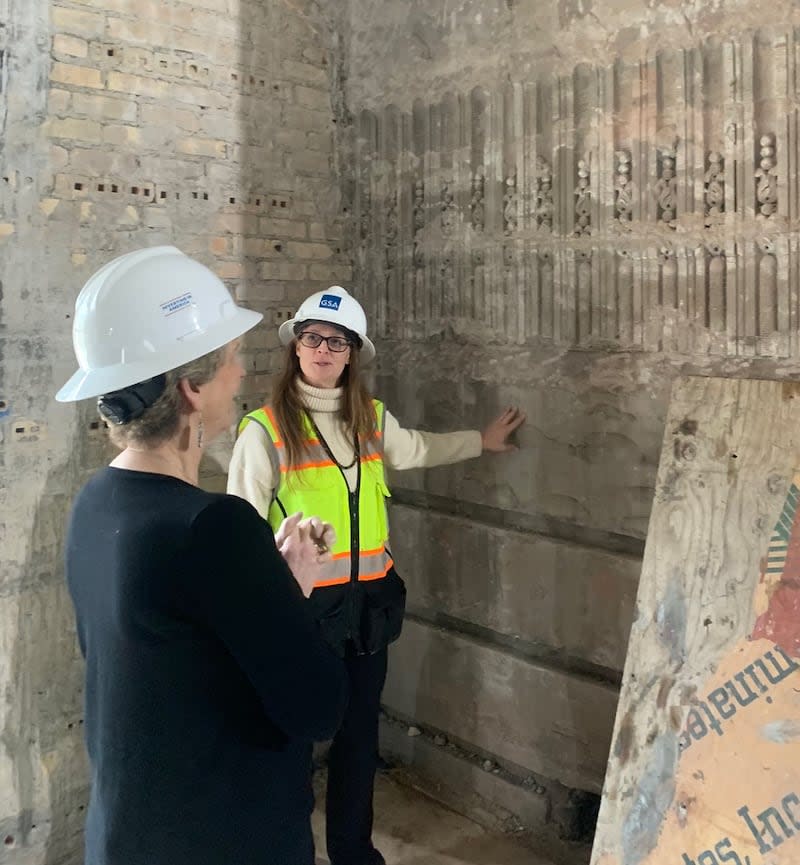
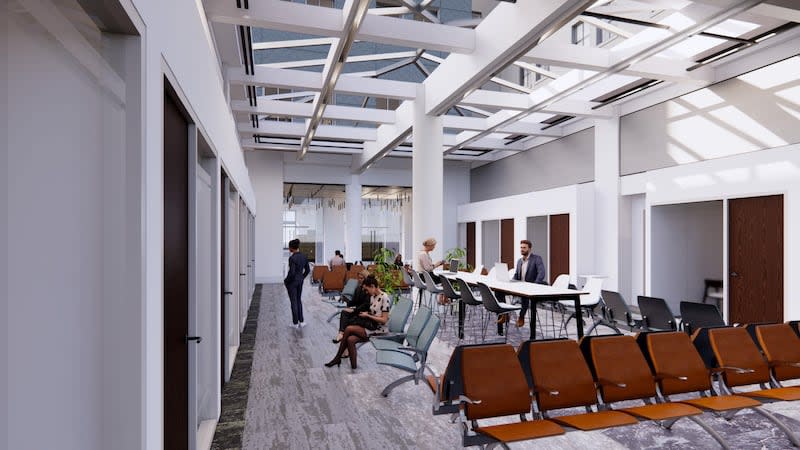
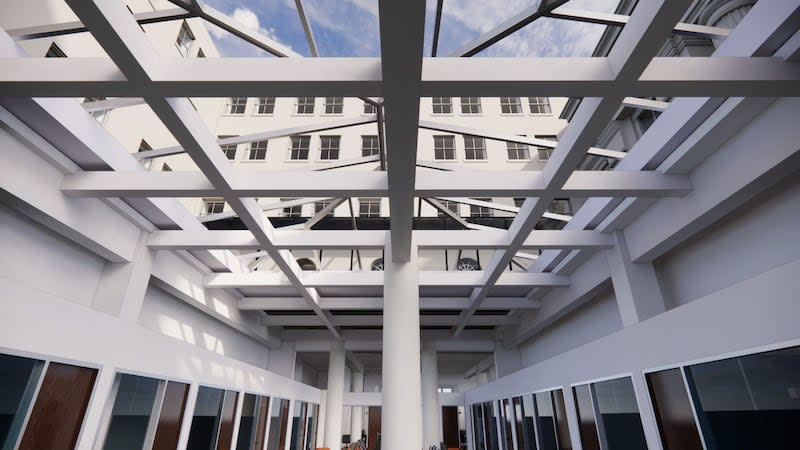
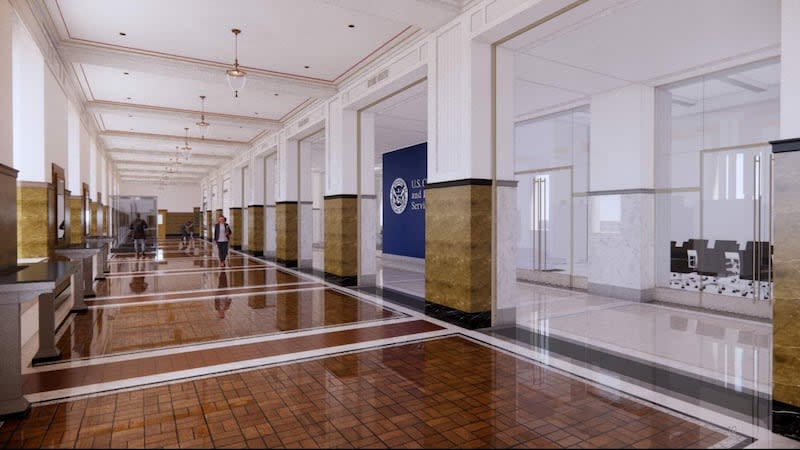
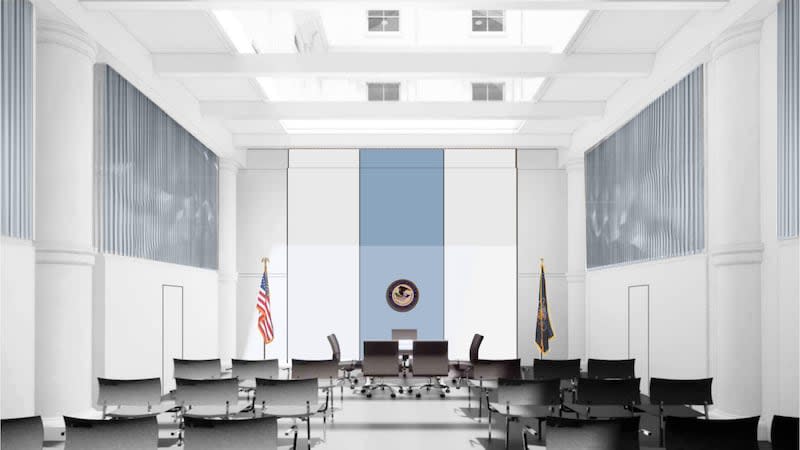
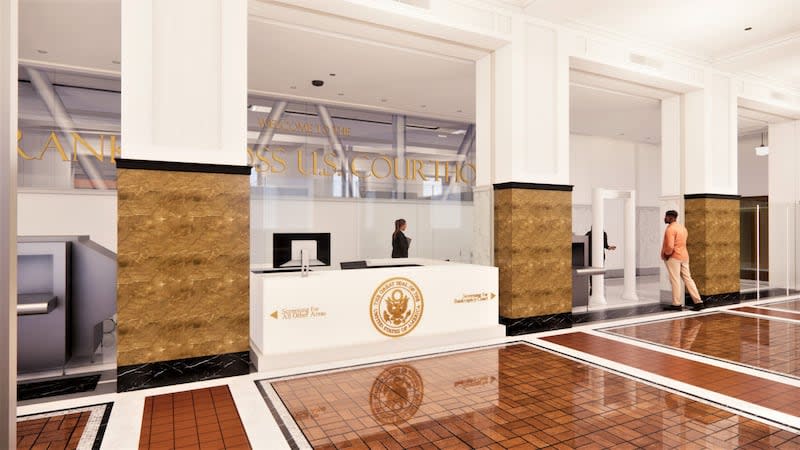
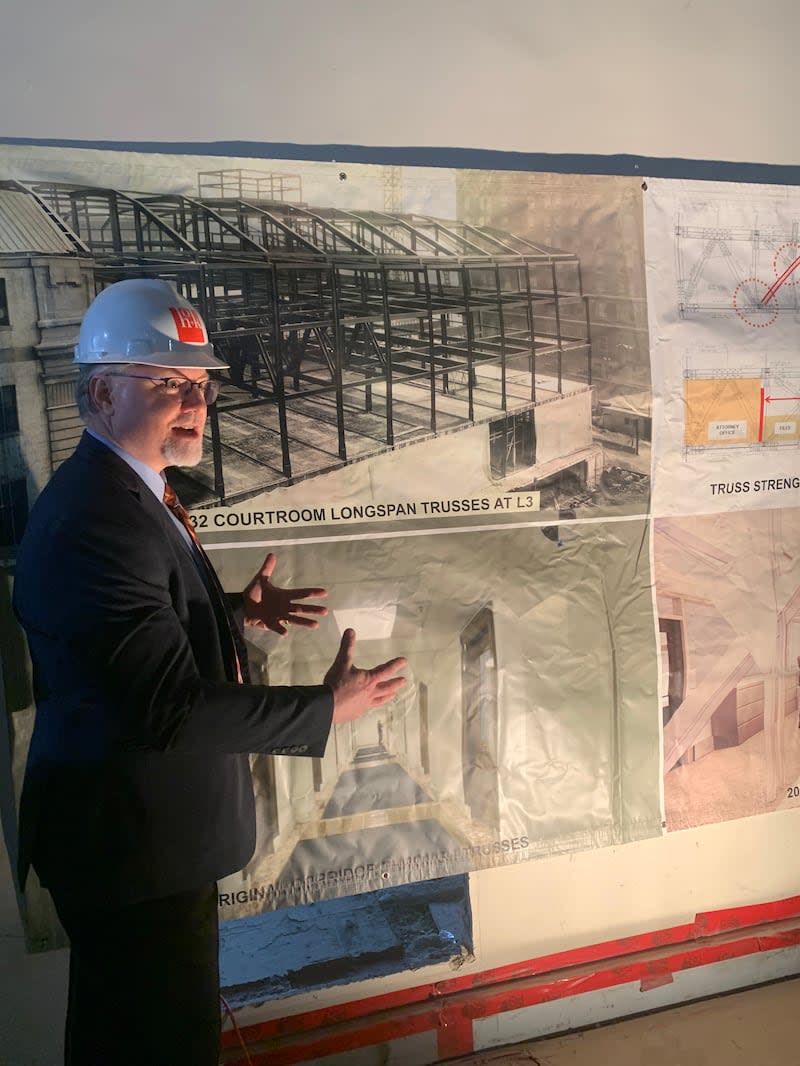
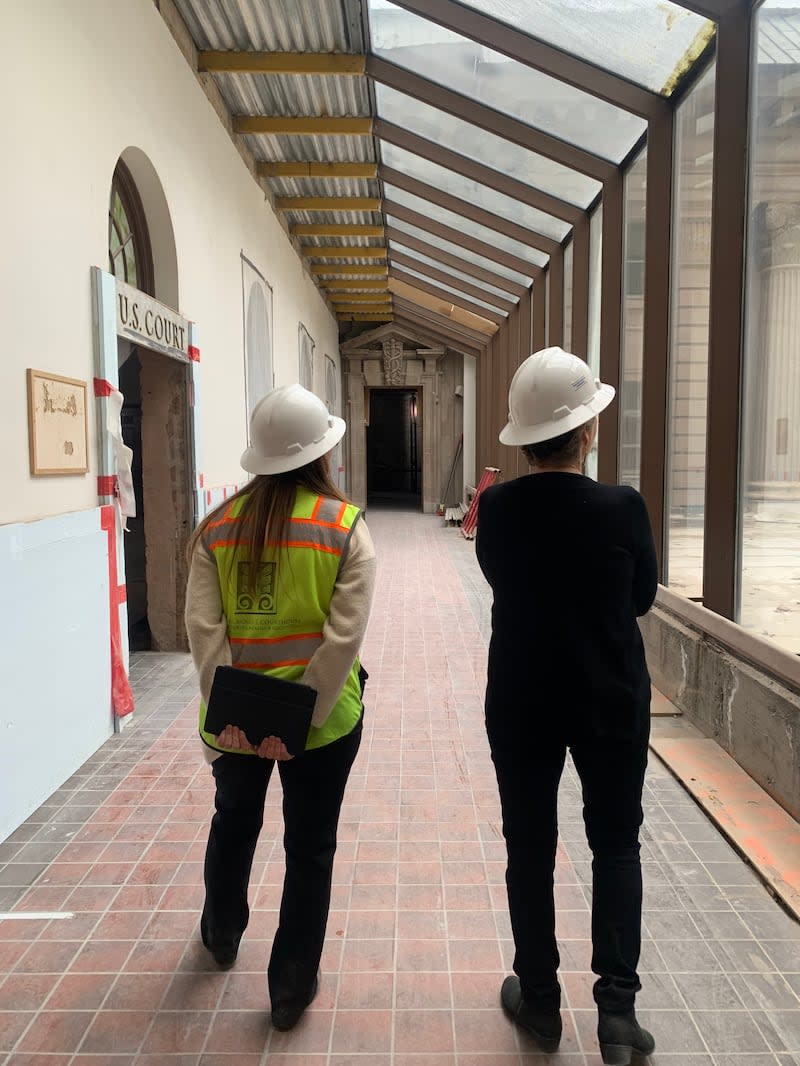
Tour reveals architectural details
The Deseret News joined Carnahan and other GSA employees, on a tour of the construction site. Holcombe pointed to a patch of sandstone carvings on two adjacent walls unearthed during construction on the third floor. Carnahan correctly guessed the craftsmanship was a part of the original construction. Holcombe said the architects are trying to leave a portion of it uncovered to honor the past.
“You can actually tell where it was like a Friday afternoon because one of the patterns is backwards,” Holcombe joked of the design on the other wall, earning a laugh from the group.
Each floor has a theme, according to Gaidis. Apart from the post office and natural resources levels, there’s the prohibition floor, an ode to the prohibition rooms from 1932, as seen in the original plans.
“We don’t know what they were used for — if they were just offices or storage for alcohol,” he said. “Level five is essentially for mostly mechanical and operational purposes. So, it’s prohibited use, it’s a little tongue-in-cheek.”
Amy Gilberston, the principal at Trivers, an architecture firm, who was also on the tour, told the Deseret News many design elements discovered in the renovation process were surprises, “But we knew they were there because we studied the original drawings and the studied original photos … from when it was built.”
Gilberston’s job is to help preserve history and find appropriate areas for modernization.
“The seismic retrofit; it’s so intensive and invasive. It took a lot of collaboration to not take the easy way out, which is putting concrete on every perimeter wall,” she said. Gilberston said, adding, there’s also been an intense push to revert to the high ceilings, as originally designed.
At the end of the tour, Carnahan looked impressed. “We are the stewards of these places,” noting the “loving attention to restoring” the courtroom will make it “a wonderful workspace for the future.”
Carnahan said this courthouse is “a showcase for the whole country of how you can preserve buildings in a way that both save money and are good for the planet.”
The GSA administrator added: “I got nothing but pride in the team and I’m eager to come back for the ribbon cutting,” which is set for mid-year 2025.

